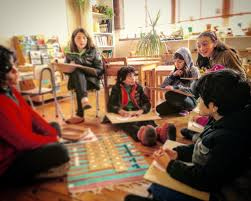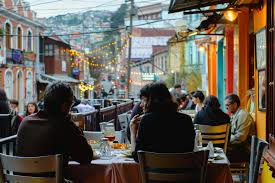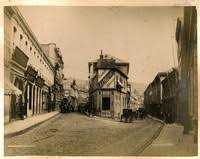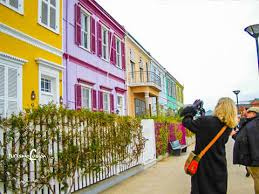What is the education system like in Valparaíso?

What is the education system like in Valparaíso?
What is the education system like in Valparaíso? The Education System in Valparaíso: An Overview.
Valparaíso is a city known for its rich cultural heritage, colorful streets, and maritime history, but it is also a hub for education in Chile.
As the home to some of the country’s oldest and most prestigious universities, Valparaíso plays a vital role in Chile’s educational landscape.
Understanding the education system in this coastal city involves exploring various levels, from early childhood education to higher education, along with the unique characteristics that define it.

Early Childhood Education
Early childhood education in Valparaíso follows the national structure, which is overseen by the Ministry of Education (Ministerio de Educación or MINEDUC).
The system includes two main stages: Pre-Kindergarten (Pre-Kínder) and Kindergarten (Kínder), aimed at children between the ages of 3 and 5.
Public and private institutions offer early childhood education, with the public sector serving the majority of children.
Government initiatives aim to increase access to early education, particularly for children from low-income families. In recent years, there has been a focus on improving the quality of early childhood education across Chile, and Valparaíso is no exception.
At this level, the curriculum emphasizes the development of cognitive, social, and emotional skills, preparing children for formal education.
Schools often integrate play-based learning methods, which are designed to foster creativity and curiosity among young learners.
Primary and Secondary Education
Primary and secondary education in Valparaíso follows the same basic structure as the rest of Chile.
Education is compulsory from the ages of 6 to 18 and is divided into two main stages: primary education (Educación Básica) and secondary education (Educación Media).
Primary education lasts for eight years, beginning at age 6. During this stage, students focus on foundational subjects such as mathematics, language, science, and social studies.
In Valparaíso, as in other parts of Chile, there is a strong emphasis on developing literacy and numeracy skills during the early years of primary education.
Secondary education, which lasts four years, is divided into two cycles: the first two years provide a general curriculum, while the last two years allow students to choose between a scientific-humanistic track, a technical-professional track, or an artistic track.
This gives students the opportunity to focus on areas of interest and better prepare for their future careers or further studies.
Valparaíso has a variety of public, private, and subsidized schools (schools that receive both government funding and private tuition).
Public schools serve a significant portion of the population, but private and subsidized schools often provide more specialized programs or higher academic performance, drawing families who can afford additional costs.
Challenges in Primary and Secondary Education
While Valparaíso boasts a number of quality schools, the education system in the city faces challenges similar to those experienced across Chile.
One major issue is the disparity between public and private education. Private and subsidized schools tend to offer better resources, more experienced teachers, and higher academic performance compared to public schools.
This gap in educational quality often leads to inequality in opportunities, particularly for students from low-income backgrounds who may not have access to private schooling.
In response, the Chilean government has implemented reforms aimed at improving public education, including increasing teacher salaries and investing in school infrastructure.
Another challenge is the high dropout rate during secondary education, particularly in the technical-professional track.
Many students leave school before graduation to join the workforce, often in low-paying jobs that offer limited upward mobility.
Efforts to address this issue include vocational training programs that aim to better prepare students for the job market while keeping them engaged in their studies.
Higher Education in Valparaíso
Valparaíso is renowned for its universities, which attract students from across Chile and abroad.
The city is home to several prestigious higher education institutions, including the Universidad de Valparaíso, Universidad Técnica Federico Santa María, and Pontificia Universidad Católica de Valparaíso (PUCV).
These universities offer a wide range of academic programs, from engineering and science to the arts and humanities.
Pontificia Universidad Católica de Valparaíso is particularly well-known for its strong academic reputation and emphasis on research.
Founded in 1928, it is one of the oldest universities in Chile and offers undergraduate and postgraduate programs in a variety of fields, including architecture, law, and education.
Universidad Técnica Federico Santa María, on the other hand, is known for its focus on engineering, technology, and science.
It consistently ranks as one of the top engineering schools in Chile and Latin America, with state-of-the-art facilities and research programs.
Valparaíso’s universities not only provide education to local students but also attract international students through exchange programs and partnerships with universities around the world.
This diversity of students and faculty contributes to a dynamic academic environment that enhances the city’s cultural and intellectual life.
Access to Higher Education and Reforms
Access to higher education in Chile, including Valparaíso, has been a topic of significant debate and reform in recent years.
Historically, tuition fees for universities in Chile have been high, making it difficult for students from low-income families to afford higher education.
In response to widespread protests and demands for reform, the Chilean government introduced a policy of tuition-free education (Gratuidad) for students from the poorest 60% of households.
This policy has allowed many students in Valparaíso to attend university without paying tuition, though it does not cover all university expenses, such as housing and materials.
Despite these reforms, there are still challenges related to access and equity in higher education.
Students from public schools, particularly in low-income areas, are often at a disadvantage when it comes to gaining admission to top universities due to the disparities in the quality of primary and secondary education.
Technical and Vocational Education
In addition to traditional universities, Valparaíso also has a strong network of technical and vocational institutions that offer practical training in fields such as hospitality, maritime studies, and technical engineering.
These institutions play a crucial role in preparing students for the workforce, particularly in sectors that are vital to Valparaíso’s economy, such as tourism and port logistics.
Technical education is often a more affordable and accessible option for students who may not wish to pursue a four-year university degree.
In recent years, there has been a growing recognition of the importance of technical and vocational training in addressing the country’s skills gap and improving employment opportunities for young people.
Cultural Influence on Education
Valparaíso’s unique cultural environment has a significant influence on its education system.
The city’s status as a UNESCO World Heritage site, its vibrant street art, and its history as a port city all contribute to a rich cultural backdrop for learning.
Many schools and universities in Valparaíso incorporate the arts and humanities into their curricula, encouraging students to engage with the city’s cultural heritage.
This creative atmosphere fosters a spirit of innovation and critical thinking, which is reflected in the academic programs offered at the city’s universities.
Valparaíso’s educational institutions are known for their interdisciplinary approaches, allowing students to explore a wide range of subjects and develop a holistic understanding of their chosen fields.
Summary
The education system in Valparaíso is diverse, with options ranging from early childhood education to higher education at some of Chile’s top universities.
While the city faces challenges such as inequality in public and private schooling, it also offers unique opportunities for students to engage with its rich cultural heritage and pursue advanced studies in a dynamic academic environment.
Whether you’re a young student or an international scholar, Valparaíso’s education system offers a pathway to knowledge and creativity.





Leave a Reply